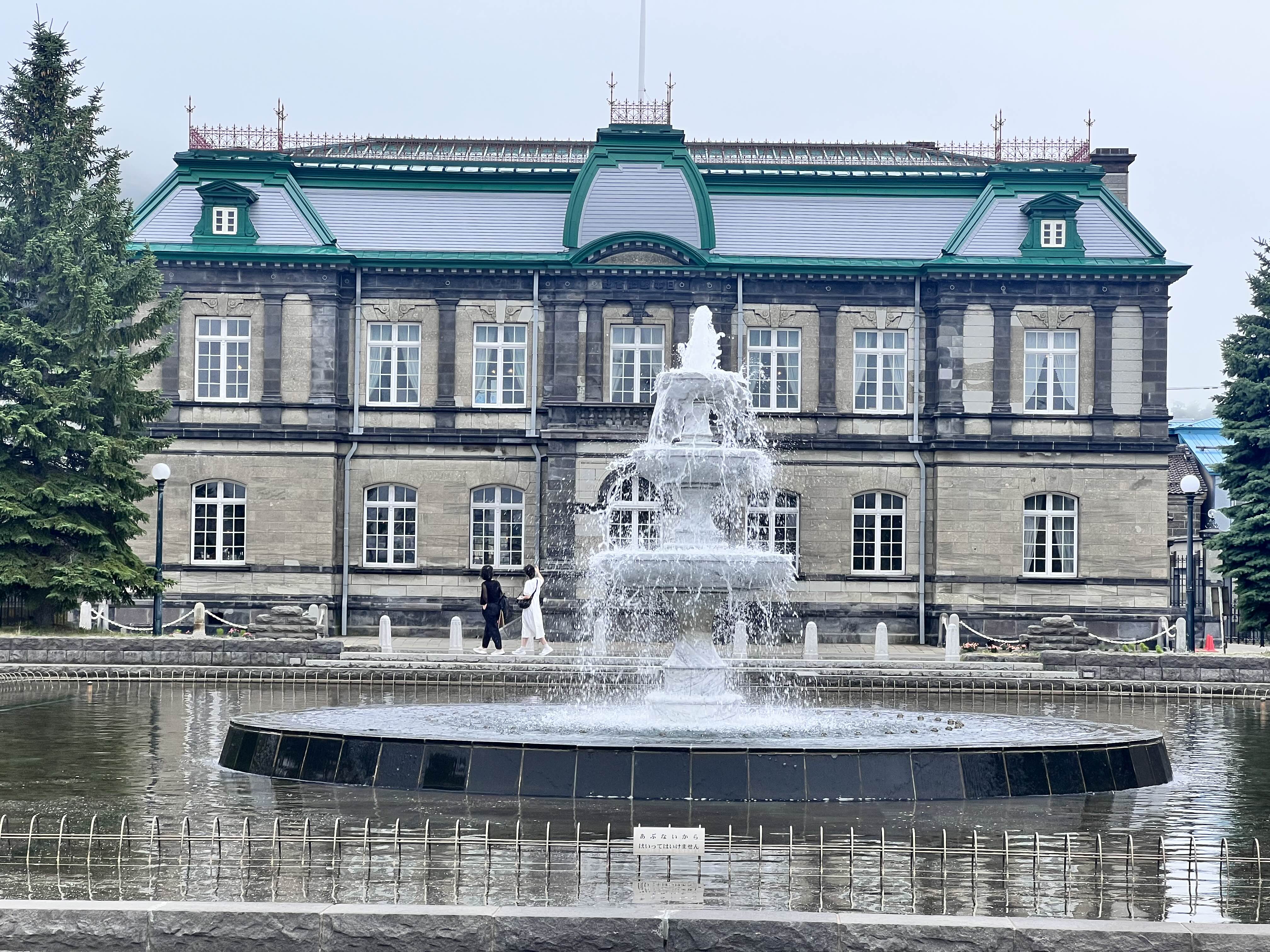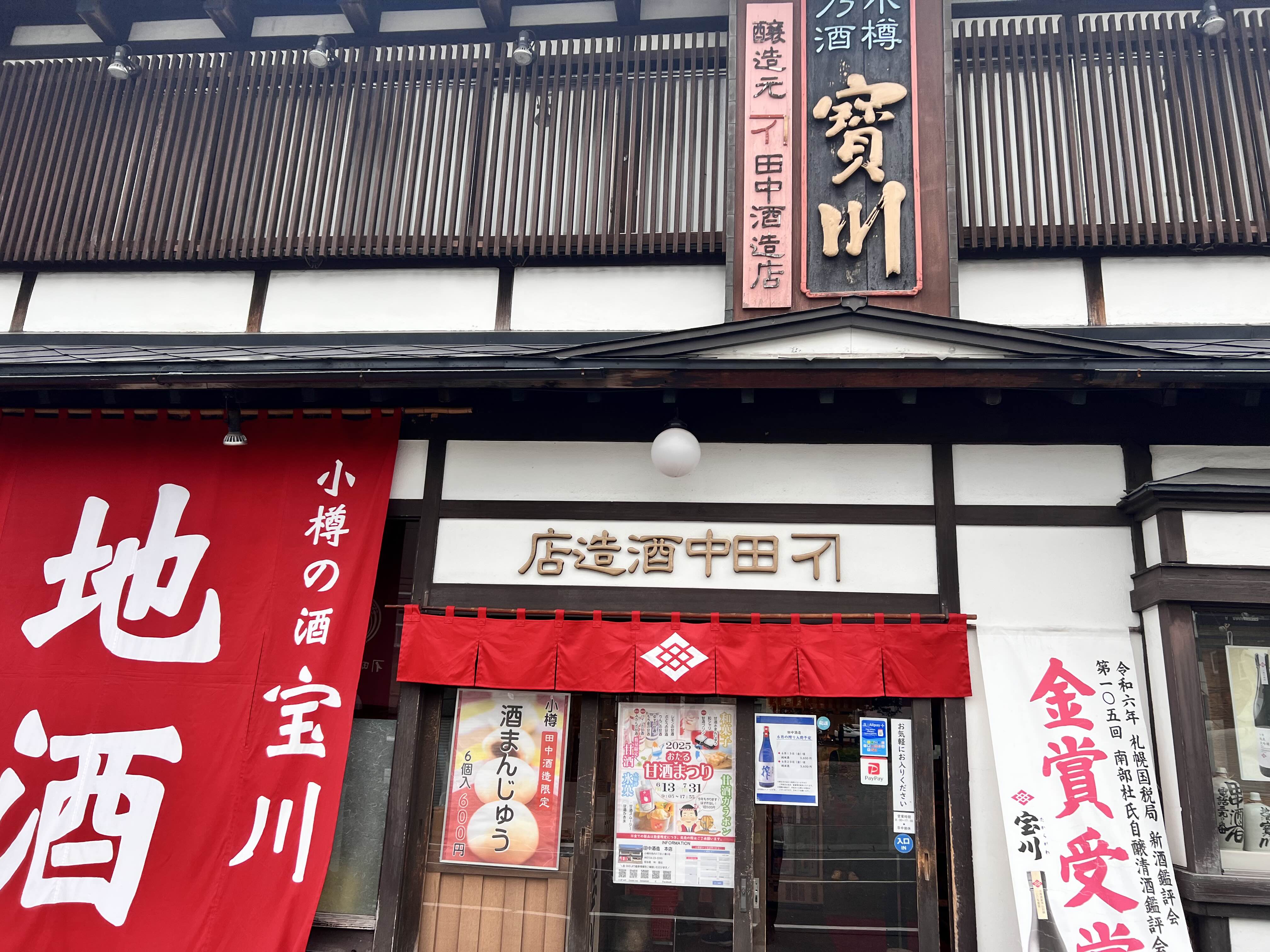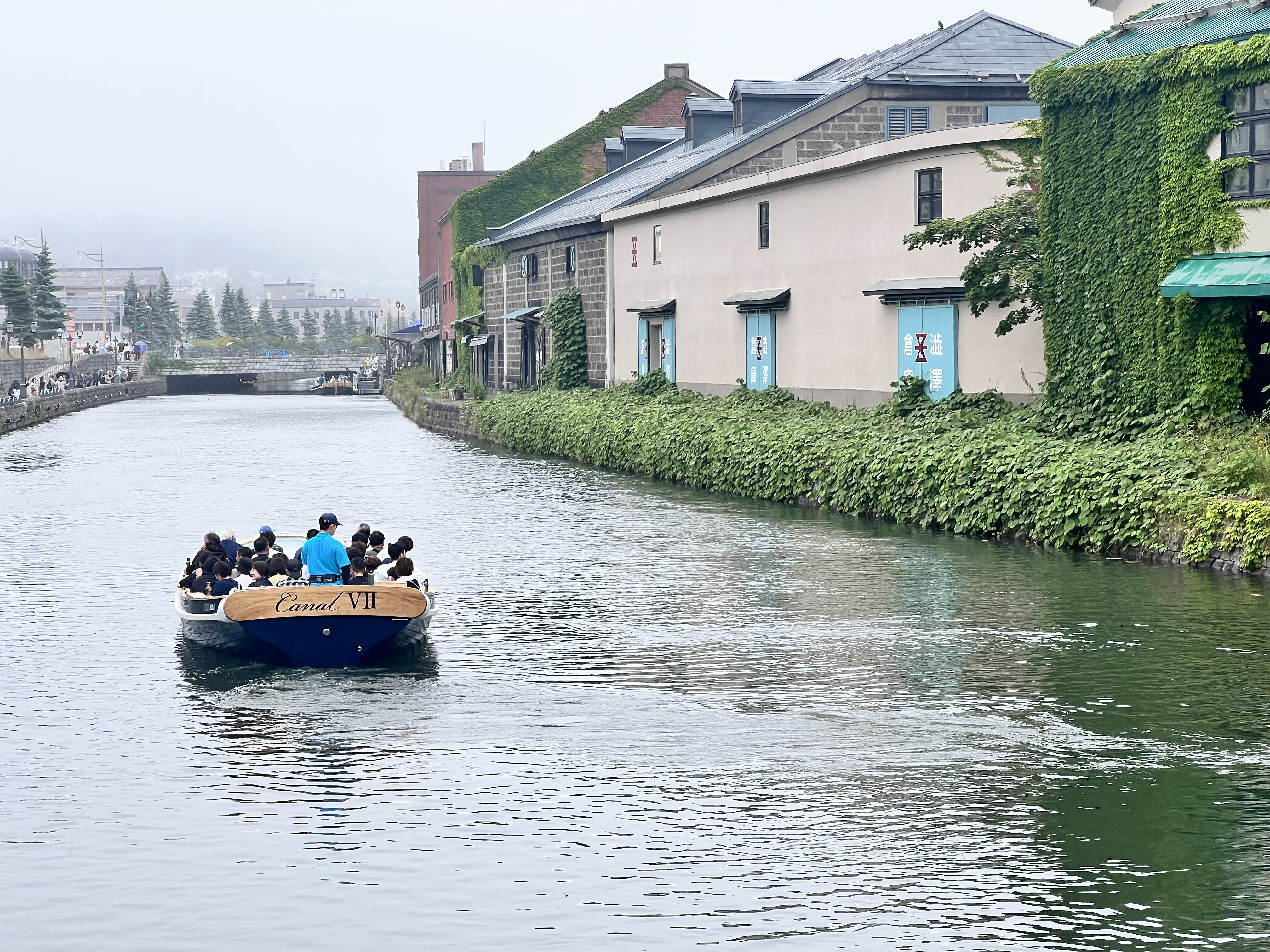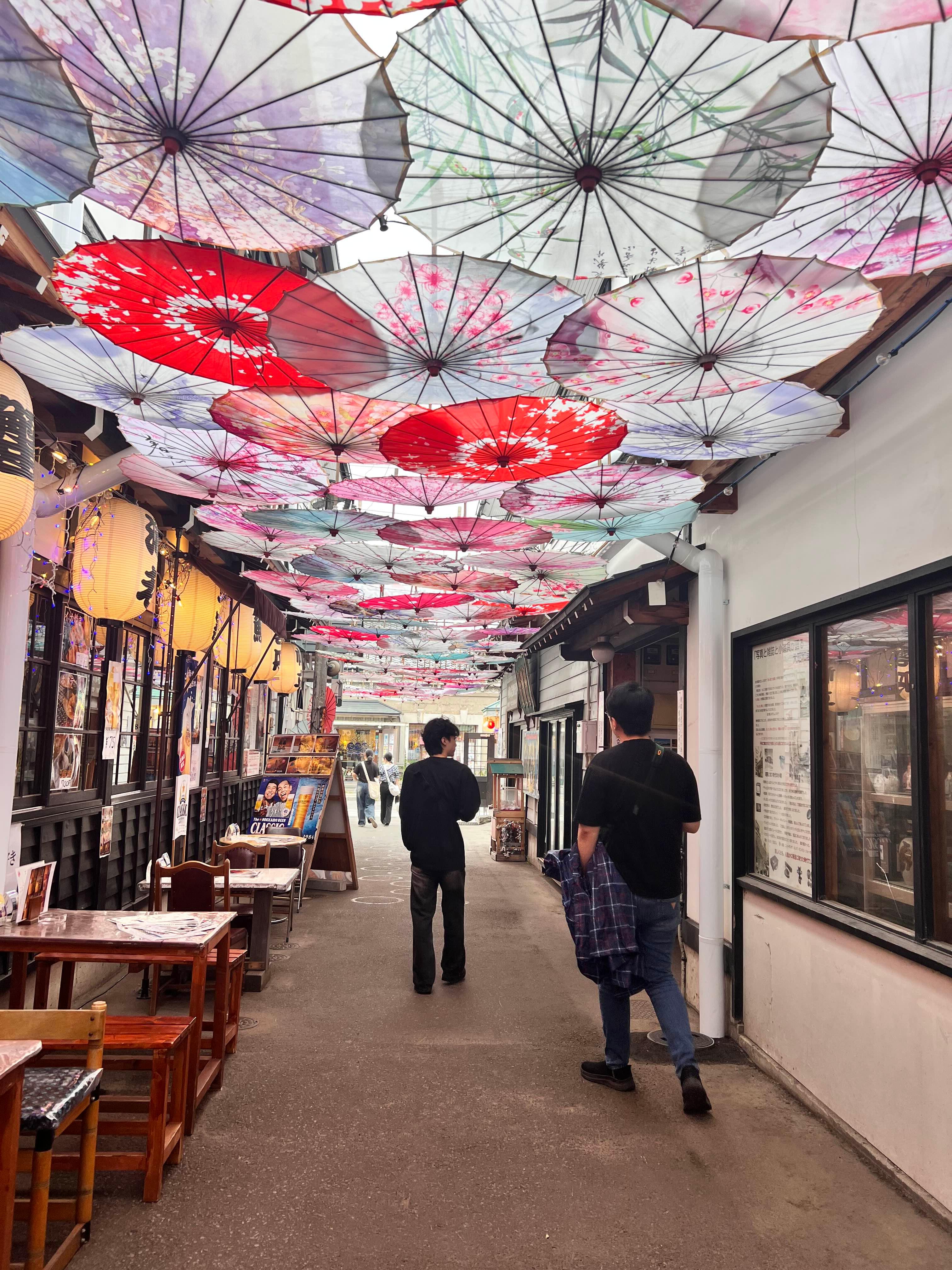삿포로 여행 4일차, 오늘은 자동차를 타고 설렘 가득한 마음으로 아름다운 항구 도시 오타루를 찾았습니다. 차창 밖으로 펼쳐지는 풍경을 감상하며 도착한 오타루는 운하와 고즈넉한 건물들이 어우러져 독특한 정취를 자아냈습니다.

가장 먼저 들른 곳은 운하 공원이었습니다. 넓은 공원 한가운데 우뚝 솟은 분수대와 그 뒤로 보이는 웅장한 서양식 건물이 시선을 사로잡았습니다. 이곳은 과거 오타루의 물류 중심지였던 운하의 역사를 보여주는 중요한 장소였습니다. 공원 내에 자리한 일본우편선 선입만(日本郵船 船入澗) 터 표지석을 보며, 한때 대형 선박들이 정박하여 짐을 싣고 내리던 활기찬 옛 모습을 상상해 보았습니다.

선입만(ふないりま)은 대형 선박이 접안할 수 있는 부두가 만들어지기 전, 항만 하역의 중심이었던 부두(はしけ)에 의한 화물의 싣고 내리던 장소였습니다. 일본 우편선 선입만은 메이지 20년대(1887년경)에 해안을 매립하고 접안 부두를 설치하면서 이곳에 정비된 것으로, 지점 사무소와 주변의 석조 창고가 일체화된 광경 속에서, 화물을 가득 실은 부두가 활발히 드나드는 모습이 보였습니다. 이 공원 내의 연못은 당시 선입만의 1/4 면적으로 재현한 것이지만, 실제 선입만이 있던 위치에는 사방에 청동판을 배치하고 그것들을 흑색 경석으로 묶어 두고 있습니다.

이어서는 일본 전통의 정취를 느낄 수 있는 나카타주조점 본점을 방문했습니다. 이곳에서는 오타루의 맑은 물로 빚은 다양한 종류의 술을 직접 시음해 볼 수 있었습니다. 깊고 풍부한 맛과 향에 감탄하며, 소중한 사람들에게 선물할 술 몇 병을 기념으로 구매했습니다.

다음으로 발걸음을 옮긴 곳은 구 쓰카모토상점(旧塚本商店)이었습니다. 1920년에 지어진 이 건물은 오타루 대화재 이후 내화성 건축물로 재건축될 만큼 역사적 의미가 깊은 곳이라고 합니다. 건조물 상점으로 시작되었다는 설명이 과거 오타루의 번성했던 상업을 짐작하게 했습니다.

오타루의 예술적인 면모를 엿볼 수 있었던 오타루 예술마을 小樽芸術村)은 또 다른 감동을 선사했습니다. 특히 스테인드글라스 박물관에서는 빛과 색이 어우러진 아름다운 작품들이 마치 살아있는 듯한 착각을 불러일으켰습니다. 빛을 머금은 유리 조각들이 만들어내는 영롱한 색채의 향연은 잊을 수 없는 경험이었습니다.

그리고 오타루의 상징, 오타루 운하를 다시 마주했습니다. 유유히 흐르는 운하 위로 유람선이 지나가는 모습은 그 자체로 한 폭의 그림 같았습니다. 운하를 따라 늘어선 붉은 벽돌 건물들은 과거의 영광을 말해주는 듯했으며, 걷는 내내 낭만적인 분위기에 흠뻑 취했습니다.

오타루 하면 역시 유리 공예를 빼놓을 수 없죠. 오타루 다이쇼 유리관(小樽 大正硝子館)에 들어서자 눈부신 유리 작품들이 가득했습니다. 특히 사진에서도 볼 수 있었던 귀여운 새 모양의 유리 공예품은 섬세함과 사랑스러움에 감탄을 자아냈습니다. 반짝이는 유리 제품들 사이에서 한참을 구경하며 오타루 유리 공예의 매력에 푹 빠졌습니다.

아기자기한 오타루 캔들 공방(小樽 CANDLE工房)에서는 직접 캔들을 만들거나 아름다운 수제 캔들을 구경할 수 있었습니다. 따뜻한 빛을 내는 캔들 하나하나에 장인의 손길이 느껴지는 듯했습니다.

이어 구 홋카이도 제분회사 건물(旧北海道製粉株式会社)과 과거 잡화점이었던 구 쿠보 상점을 차례로 둘러보았습니다. 이 건물들은 모두 오타루 시 지정 역사적 건조물로, 각기 다른 건축 양식과 스토리를 가지고 있어 오타루의 과거를 생생하게 느낄 수 있게 해주었습니다.

오타루의 가장 번화한 상점가 중 하나인 사카이마치 거리는 쇼핑과 구경의 즐거움을 동시에 안겨주었습니다. 다양한 기념품 가게와 맛집들이 즐비해 시간 가는 줄 몰랐습니다.

마지막으로 방문한 오르골당에서는 수많은 오르골의 아름다운 선율이 울려 퍼지며 여행의 피로를 잊게 해주었습니다. 각양각색의 오르골 중에서 마음에 드는 것을 고르며 특별한 기념품을 찾는 재미도 쏠쏠했습니다.
자동차로 편안하게 둘러본 오타루는 역사와 예술, 낭만이 공존하는 매력적인 도시였습니다. 운하의 고즈넉함부터 유리 공예의 섬세함, 그리고 오래된 건물들이 간직한 이야기까지, 오타루에서의 하루는 잊지 못할 추억으로 가득 채워졌습니다.
Bach: Das Musikalische Opfer BWV1079(Musical Offering) / Jordi Savall Concert des Nations
https://youtu.be/mGn3xkneyOw
Otaru: A City of Romance and History Along the Canal
On the 4th day of our Sapporo trip, we drove to the beautiful port city of Otaru with excited hearts. As we admired the scenery from the car window, we arrived in Otaru, where the canal and the quaint old buildings created a unique atmosphere.
Our first stop was Canal Park. A grand fountain stood tall in the middle of the spacious park, and behind it, an imposing Western-style building caught our eye. This place was an important site showcasing the history of the canal, which was once Otaru's logistics hub. Looking at the monument for the Former Nihon Yusen Funairiso (Japanese Mail Ship Boat Basin) site within the park, we imagined the vibrant past when large vessels used to dock here to load and unload cargo.
Next, we visited the Nakata Shuzo Main Store, where we experienced the charm of traditional Japanese culture. Here, we had the chance to sample various types of sake brewed with Otaru's clear water. Impressed by the deep and rich flavors, we purchased several bottles of sake as gifts for loved ones. We also took many photos of the serene atmosphere inside the brewery and the rows of sake barrels.
Our next destination was the Former Tsukamoto Store (旧塚本商店). Built in 1920, this building holds significant historical importance, having been rebuilt with fire-resistant features after the great Otaru fire. The description, stating it began as a dry goods store, hinted at Otaru's prosperous commercial past.
The Otaru Art Village (小樽芸術村), where we glimpsed Otaru's artistic side, brought another wave of emotion. Particularly in the Stained Glass Museum, the beautiful works, harmonizing light and color, seemed almost alive. The radiant spectrum created by the light passing through the glass pieces was an unforgettable experience.
Then, we once again encountered Otaru's symbol, the Otaru Canal. The sight of tour boats gracefully gliding over the calm canal water was a picturesque scene in itself. The red-brick buildings lining the canal seemed to speak of past glories, and we were immersed in the romantic atmosphere during our stroll.
Of course, we couldn't miss Otaru's renowned glass crafts. Upon entering the Otaru Taisho Glassware (小樽 大正硝子館), we were greeted by a dazzling array of glass art. The cute bird-shaped glass ornaments, also seen in the photos, were so delicate and lovely that they inspired awe. We spent a long time admiring the sparkling glass products, completely captivated by the charm of Otaru's glass art.
At the charming Otaru Candle Kobo (小樽 CANDLE工房), we could either make our own candles or browse beautiful handmade ones. Each candle, emitting a warm glow, seemed to bear the touch of a craftsman.
Subsequently, we explored the Former Hokkaido Flour Milling Company Building (旧北海道製粉株式会社) and the Former Kubo Store, which was once a sundry shop. Both are designated historical buildings of Otaru City, each with distinct architectural styles and stories, allowing us to vividly experience Otaru's past.
Sakamachi Street, one of Otaru's most bustling shopping areas, offered both the joy of shopping and sightseeing. With various souvenir shops and delicious eateries, time flew by. Our final visit was to the Music Box Museum, where the beautiful melodies from countless music boxes helped us forget our travel fatigue. It was also fun to pick out a special souvenir from the diverse collection of music boxes.
Our comfortable car trip around Otaru revealed a charming city where history, art, and romance coexist. From the serene canal and the delicate glass crafts to the stories held within the old buildings, our day in Otaru was filled with unforgettable memories.



